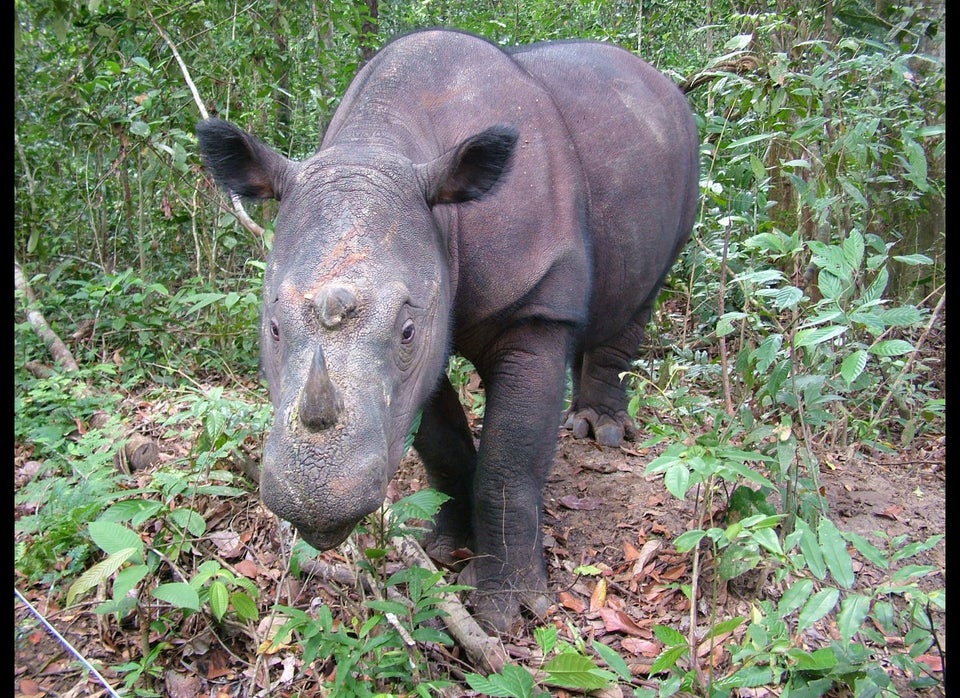
If you're a poacher hoping to smuggle rhino horns through a U.S. port, Uncle Sam wants you to know you're barking up the wrong tree. And he has a new team of elite, hard-nosed cops to help him deliver that message: Butter, Viper, Lancer and Locket.
The first class of "wildlife inspector dogs" graduated this week from the U.S. Department of Agriculture's National Detector Dog Training Center (NDDTC) in Newnan, Ga., where they spent 13 weeks learning to identify the scent of endangered species — whether it's South American rosewood or African elephant ivory. The four graduates, along with their human handlers, will soon be stationed at key ports around the country, where they'll join a nationwide effort to stem the illegal trade in plant and animal parts.
"The recent rapid growth in the global trade in protected wildlife is pushing some species perilously close to extinction," says Ed Grace, deputy chief of the U.S. Fish and Wildlife Service's Office of Law Enforcement, in a press release. "Elephant and rhino populations in particular are declining at alarming rates. The battle to stop wildlife smuggling is one we simply cannot afford to lose, and using dogs and their phenomenal sense of smell to catch smugglers will give us a real leg up in this effort."
Dogs already have a long history in law enforcement, from hunting fugitives to helping police detect bombs and drugs. But while they've been man's best friend for millennia, their high-powered noses are increasingly ingratiating them to Mother Nature, too. Florida wildlife officials train dogs to sniff out invasive pythons in the Everglades, for example, while conservationists at the University of Washington train them to track endangered native animals by smelling their scat. On a small island in Australia, sheepdogs have even been entrusted to protect a population of endangered penguins.
But the task facing Bullet, Viper, Lancer and Locket — as well as future NDDTC cadets — is much broader than patrolling a single ecosystem. They will soon accompany agents with the U.S. Fish and Wildlife Service on the front lines of an expanding battle, one that pits international crime syndicates against a wide array of rare wildlife.
This comes on the heels of an unusually fruitful wildlife-trade summit held in Bangkok last month, one that highlighted both the gravity of the problem and the emerging possibilities for containing it. Conservationists pulled off several victories during the 2013 Convention on International Trade in Endangered Species (CITES), including new trade protections for sharks, turtles, elephants and great apes. But as critical as such regulations are, they're only as effective as their enforcers. The U.S. is a major market for illegally traded wildlife, and human officers can only inspect so many packages.
"On an average day, I as a human being can physically inspect, if I'm pushing myself hard, anywhere from 70 to 100 packages," FWS wildlife inspector Denise Larison says in a video about the new dog program. "And as you can see, the dogs can do 70 to 100 packages in a matter of minutes." While a human would need to unwrap and unpack each box to thoroughly examine it, the specially trained dogs can smell through packaging, allowing them to inspect potential contraband far more efficiently.
And as FWS inspector Amir Lawal points out, the dogs don't just lighten the workload of their human partners — they can also lift their spirits.
"This gives me a chance to combine my two great loves, wildlife and dogs," says Lawal, who works at the port of Miami. "I can't wait to get started in the field with my new partner to stop illegal wildlife shipments."
Check out this FWS video to see the new graduates in action:
